One of the most beautiful cities in Tuscany is Florence. It is famous for its excellent Renaissance architecture, historical palaces, impressive churches, and museums that house works of well-renowned artists of all time like Michelangelo, Botticelli, Da Vinci, and more. This romantic destination appeals to couples who want to spend some quality time away from their daily bustles. However, it’s also a wonderful destination for solo travelers or groups of friends seeking a thrilling vacation. If you want to go for non-touristy things to do, check out some of the lesser-known as well as famous landmarks in Florence, Italy. With loads to see and do, Florence will certainly fascinate you when you decide to visit. Before you go, know where to stay in Florence and check out the best vacation rentals at your disposal. In case you want to go sightseeing around the city’s exquisite structures, continue reading to discover the top famous buildings in Florence, Italy.
1. Palazzo Medici Riccardi

Designed by the eminent Renaissance architect Michelozzo di Bartolomeo in the 15th century, Palazzo Medici Riccardi served as the residence of the powerful and influential Medici family, one of the most prominent patrons of the Italian Renaissance. Its famous features include a harmonious blend of Renaissance and classical architectural elements, such as the rustic stone facade and the elegant courtyard with its graceful arches.
The palace is also celebrated for its role in fostering the cultural and artistic developments of the Renaissance, having been a meeting place for luminaries such as Michelangelo and Botticelli. Today, Palazzo Medici Riccardi stands as a testament to the city’s rich cultural heritage and is open to the public, showcasing a splendid collection of art and historical artifacts.
Palazzo Medici Riccardi
Address: Via Camillo Cavour, 3, 50129 Firenze FI, Italy
Website: Palazzo Medici Riccardi
Opening hours: Thu - Tue: 9am - 7pm (closed on Wed)
Price: Full price from 7 EUR (7.38 USD)
Tip from tour guide



Who wouldn't like to go back in time to experience the grandeurs of the past? At Palazzo Medici Riccardi, you can do just that. The walls here originally lacked archaeological decorations, and in the place of Orpheus stood the sensual bronze statue of David by Donatello. In the larger garden, wild and exotic animals were kept in cages and there was a loggia with magnificent trees and plants on the roof.
I like to imagine this courtyard full of vibrant life in the 15th century. Imagine servants, maids, guards, and citizens of Florence waiting in a long line to be received by the Medici. Or, try to close your eyes and see luxurious decorations and tables set for the wedding of Lorenzo the Magnificent with Clarice Orsini, which was an important marriage to guarantee the entrance of the family in the range of popes. You can also try to feel the presence of young Michelangelo, living here for some years under the protection of the Medici.
Tip from tour guide

Every time I see the Mirror Gallery in the Medici building in Florence, it takes my breath away. This is just a piece of a ceiling full of symbols, allegories, and myths.
You can see The Cave of Eternity, inside of which there's the god of time, winged Chrono with the hourglass. In the foreground, Giano Bifronte stretches his wool at the tre Parche. It’s up to them to weave the thread of human life and cut it at will. On the other side, there's perhaps Necessity in the company of the allegory of Fate (blinded) and Nature. Uroboro, the snake that bites its tail, closes everyone to depict the cyclic nature of life.
Everything is created with beautiful colors and soft and graceful shapes by Luca Giordano (1682-85).
2. National Museum of Bargello

This historic building in Florence, Italy, has been turned into a museum featuring works of legendary artists such as Donatello, Michelangelo, and Cellini. Visitors can marvel at the museum’s prized possessions, including Donatello’s David, Michelangelo’s Bacchus, and many more.
Beyond sculptures, the National Museum of Bargello also boasts an extensive assortment of porcelain artifacts and textiles from different periods. With its rich history and impressive exhibits, the National Museum of Bargello stands as a cherished cultural treasure and a must-visit destination for art enthusiasts and history buffs.
National Museum of Bargello
Address: Via del Proconsolo, 4, 50122 Firenze FI, Italy
Website: National Museum of Bargello
Opening hours: Wed - Mon: 8:15am - 1:50pm (closed on Tue)
Price: 8 EUR (8.43 USD)
Tip from tour guide

Aside from masterpieces by various legendary artists and sculptors, Bargello National Museum features a beautiful fountain, Fonte di Giunone, which was created by Bartolomeo Ammannati, 1561 - 63. The fountain is very particular as a representation of various allegories and in its form. It depicts the four elements, Water, Air, Earth, and Fire, as well as Juno, Ceres, Arno, Parnassus, Flora, and Prudence. Some statues are truly beautiful, such as Juno sitting and Ceres standing below, while others are less successful, such as the goddess Flora standing on the right.
The fountain was to be placed in the Salone del Cinquecento in Palazzo Vecchio. However, today you find it reassembled in the courtyard of the Bargello.
Tip from tour guide

The Bargello museum, almost unknown to most tourists, contains real treasures of painting, sculpture, medieval art, Islamic art, frescoes, ceramics.
Amongst them: the sculptures by Michelangelo, Donatello and Benvenuto Cellini. In addition, all this beauty is housed in a 14th-century building inextricably linked to the city's history. So much more deserves to be discovered at the Bargello, which is never overrun by tourists and tickets can be easily purchased on the spot.
3. Laurentian Medici Library

One of the most historic structures in Florence is the Laurentian Medici Library. It is home to over 11,000 manuscripts and over 4,000 printed books. This building was established in order to emphasize that the Medici banking and political family in Florence were merchants no more but were actually members of the intelligent society. Some items from the private library of the family are displayed in this Florence attraction. This magnificent structure was designed by the famous Michelangelo and boasts a Mannerism (or Late Renaissance) style.
Laurentian Medici Library
Address: Piazza San Lorenzo, 9, 50123 Firenze FI, Italy
Website: Laurentian Medici Library
You might be interested in these Airbnbs!
4. The Baptistery of St. John

The Baptistery of St. John, commonly known as the Florence Baptistery, is a religious structure and holds the title of minor basilica. This building is octagonal and is located within the area of Piazza del Duomo and Piazza San Giovanni. Featuring a Florentine Romanesque style, this building is one of the oldest in the city, with its construction dating between 1059 and 1128. The intricate features of this Florence landmark include the bronze doors with relief sculptures and Donatello’s monument creation of the tomb of Antipope John XXIII.
The Baptistery of St. John
Address: Piazza San Giovanni, 50122 Firenze FI, Italy
Website: The Baptistery of St. John
Tip from tour guide


 The Baptistery of St. John is definitely worth a stop for history and art lovers! Inside the Baptistery, you can check out mosaics with the Last Judgment, the stories from Genesis, the Gospels about Joseph being betrayed by his brothers, and of course, about St. John the Baptist. There's also a shocking message hidden in the frame of the south door of the Baptistery. When we stand in front of it, on our left we see Adam with animals on him that symbolize fertility and salvation, along with beneficial plants such as olive trees, ears of wheat, and lilies. On the right, we see Eve, who always pays for the Original Sin. She is presented with animals and plants associated with witchcraft, such as an owl, poppies, sorghum, viburnum, and henbane. The latter has narcotic and poisonous properties; Hamlet’s father was killed with this plant! Additionally, you can find holly, whose berries are toxic to humans, and also see the spindle and the rock, which are generally associated with witches. In short, Eve is shown to be associated with the devil, witchcraft, and misfortune. The frame was sculpted by Vittorio Ghiberti according to the design of Father Lorenzo in the years 1453-66. When you think that 50 years later many witches will start burning in Italy, this sends a chilling message.
The Baptistery of St. John is definitely worth a stop for history and art lovers! Inside the Baptistery, you can check out mosaics with the Last Judgment, the stories from Genesis, the Gospels about Joseph being betrayed by his brothers, and of course, about St. John the Baptist. There's also a shocking message hidden in the frame of the south door of the Baptistery. When we stand in front of it, on our left we see Adam with animals on him that symbolize fertility and salvation, along with beneficial plants such as olive trees, ears of wheat, and lilies. On the right, we see Eve, who always pays for the Original Sin. She is presented with animals and plants associated with witchcraft, such as an owl, poppies, sorghum, viburnum, and henbane. The latter has narcotic and poisonous properties; Hamlet’s father was killed with this plant! Additionally, you can find holly, whose berries are toxic to humans, and also see the spindle and the rock, which are generally associated with witches. In short, Eve is shown to be associated with the devil, witchcraft, and misfortune. The frame was sculpted by Vittorio Ghiberti according to the design of Father Lorenzo in the years 1453-66. When you think that 50 years later many witches will start burning in Italy, this sends a chilling message.
Florence Tour Guide
Joanna
Hello, my name is Joanna. I was born and raised in Poland but then I fell hopelessly in love with Tuscany and have been living in Florence for 20 years. Wisely enough, I decided to turn my passion into work and became a tour guide. Now I can share with you my immense love for the beauty, history and art of these enchanted places. I am particularly passionate about the Middle Ages, history, scu... Read more
Tours by Joanna
Florence Tour Guide
Sara Pallabazzer
I am a lively well-spoken tour guide and tour leader from Florence, and a person who has the ability to motivate different sets of audience; to communicate effectively and possesses a high degree of energy and enthusiasm.I am able to manage multiple tasks, self-motivated team player with excellent communication skills. I am proficient in Italian, English and Norwegian and possess a strong love ... Read more
Tours by Sara
Florence Tour Guide
Francesca Boldrini
Linguist specializing in art history. I am a licensed tour guide with natural communicating skills and a big passion for Tuscany andRinascimento. I speak five languages: Russian at B2 TRKI level, German at B1 level, English, Italian and French at the mother tongue level.I’ve got a great problem solving skills and the ability to work under pressure gained thanks to my experience in hospitality. ... Read more
Tours by Francesca
5. Florence Cathedral

Cathedrale di Santa Maria del Fiore, also known as Florence Cathedral, is one popular building in the city for its astonishing 19th-century Gothic revival façade, polychrome marble in shades of white, green, and pink, and a beautiful dome designed by Flippo Brunelleschi – a world-renowned artist. Together with two other buildings, the Baptistery and Giotto’s Campanile, they make up part of the region’s UNESCO World Heritage Sites, located in the historic center, which is a well-loved tourist destination in Tuscany. This gem of architecture in Florence is also one of the largest churches in the world and has the largest dome in the world.
Florence Cathedral
Address: Piazza del Duomo, 50122 Firenze FI, Italy
Website: Florence Cathedral
Tip from tour guide

 Take some time to look at the details of the main entrance at the cathedral. The bronze door was created by Augusto Passaglia between 1899 and 1903. The facade of the cathedral was done only at the end of the 19th century. The main scenes of the door are the Assumption and the Coronation of the Virgin Mary. The two large marble statues on the sides are St Reparata and St Zenobius, sculpted by a woman, Amalia Dupré. On the top, the mosaic was designed by Nicolò Barabino, depicting Jesus surrounded by Mary and the saints - quite an original representation. You can admire many other details and decorations while in the queue to enter the cathedral.
Take some time to look at the details of the main entrance at the cathedral. The bronze door was created by Augusto Passaglia between 1899 and 1903. The facade of the cathedral was done only at the end of the 19th century. The main scenes of the door are the Assumption and the Coronation of the Virgin Mary. The two large marble statues on the sides are St Reparata and St Zenobius, sculpted by a woman, Amalia Dupré. On the top, the mosaic was designed by Nicolò Barabino, depicting Jesus surrounded by Mary and the saints - quite an original representation. You can admire many other details and decorations while in the queue to enter the cathedral.
6. Santa Maria Novella

One of the oldest churches of the Dominican Order in Florence is the Basilica of Santa Maria Novela that dates back to the middle ages. This building was created using a mixture of architectural styles. This Florence building started with a Gothic style, and after 200 years, the façade was finished using the Renaissance architectural style, which you can see in its Romanesque columns, arches, and pediments. Another notable thing about the structure is it is home to the Holy Trinity, which is a masterpiece of Masaccio.
Santa Maria Novella
Address: Piazza di Santa Maria Novella, 18, 50123 Firenze FI, Italy
Website: Santa Maria Novella
Tip from tour guide



While you're at Santa Maria Novella, make sure to check out Tornabuoni Chapel (shown in the video). I'm still impressed by the amount of details and vivid colors used in the frescoes at the chapel. It's like taking a trip back in time to find 15th-century Florentines with their proud expressions and precious clothes.
You can see humanists of Laurent the Magnifique, rich bankers and merchants with their wives and daughters, and the painter Ghirlandaio himself. The landscape is rendered with grace and precision. The architecture is gorgeous and the colors are stunning. The stories of the Virgin and Saint John the Baptist only serve as the setting for worldly life at that time.
It's not known whether the young apprentice of Ghirlandaio, Michelangelo, participated in the decoration of the chapel. I still like to think he was impressed by his master's colors, even stronger than the colors he used in the Sistine Chapel.
Tip from tour guide
The Cappellone degli Spagnoli is the ancient chapter house of the church of Santa Maria Novella in Florence. Famous for its rich cycle of frescoes by Andrea di Bonaiuto (1365-1367), it assumed its present name in 1566 when it was given to the colony of Spaniards who gathered here since arriving in the city in the retinue of Eleonora di Toledo, who married Cosimo I dei Medici in 1539.
7. Palazzo Pitti

Another famous thing in Florence is the grand Palazzo Pitti or the Pitti Palace. It is one of the biggest museums in Florence, which houses numerous different galleries, the lovely Boboli Gardens, and the astonishing and jaw-dropping gown of Eleanor di Toledo. Originally, the palace was made for a Florentine banker then later on bought by Toledo and has been in the Medici Family for centuries before being transformed into a museum. This palace is greatly influenced by the Renaissance style of architecture which you can see in its symmetrical elements.
Palazzo Pitti
Address: Piazza de’ Pitti, 1, 50125 Firenze FI, Italy
Website: Palazzo Pitti
8. Basilica of San Lorenzo

Untouched and preserved, the façade of the Basilica of San Lorenzo makes it the oldest structure in Florence. It is the parish church of the Medici, a wealthy family in Florence during the 1400s. One of its notable features is its symmetry and harmony which is an impressive example of the Renaissance architectural style. Apart from the Renaissance style, Michelangelo’s new sacristy, which is a part of the basilica, used an almost Mannerist style of architecture that was a notable style in the 1520s.
Basilica of San Lorenzo
Address: Piazza di San Lorenzo, 9, 50123 Firenze FI, Italy
Website: Basilica of San Lorenzo
Tip from tour guide



Are you a fan of Donatello's work? He was a sublime genius, a friend of Brunelleschi, and Michelangelo's main inspiration, with a mysterious, long life and an amazing artistic evolution. Donatello was even buried next to Cosimo the Elder. Florence is full of the sculptor's works. At the Basilica of San Lorenzo, you can see the last works of Donatello, the bronze pulpits.
9. Palazzo Vecchio

One of the most impressive town halls in Tuscany is the Palazzo Vecchio. It is a fortress-palace with a tall Gothic, Romanesque bell tower that conveys an image of strength and power of the Republic of Florence, which is much needed during the year 1299, for the republic is faced with political turmoil. The creation of the town hall is the first form of democracy, wherein the people voted for the creation of a palace to serve as a town hall. It is also evident in its façade, the shields and emblem of the notable and significant worker guilds which depicts diversity and the wealth of the place.
Palazzo Vecchio
Address: Piazza della Signoria, 50122 Firenze FI, Italy
Website: Palazzo Vecchio
10. Ponte Vecchio

One of the most exquisite structures in Florence that you will see, which is not a museum or a church, is the Ponte Vecchio. It is a beautiful bridge, the oldest in Florence, and also the only bridge that remains intact even after the bombing during World War II. Another thing that separates it from the rest and makes it more unique is the colorful shops along the bridge that peaks out of the water.
Ponte Vecchio
Address: Ponte Vecchio, 50125 Firenze FI, Italy
11. Uffizi Gallery

Overlooking the Ponte Vecchio and the Arno River, Uffizi Gallery is the most iconic and one of the most important museums in Florence. It offers numerous galleries that exhibit the works of the famous artist of all time like Michaelangelo, Raffaelo, Botticelli, and more. This Florence famous building was originally the administrative center of Medici and then it was turned into a museum that showcases excellent artworks from renowned artists.
Uffizi Gallery
Address: Piazzale degli Uffizi, 6, 50122 Firenze FI, Italy
Opening Hours: Tue-Sun: 8:15am–6:50pm
Website: Uffizi Gallery
Tip from tour guide



Returning to Uffizi Gallery to see a collection of self-portraits of the artists hung two months ago, I had the opportunity to be enchanted by this painting. Baccio Maria Bacci, an artist from Florence who lived from 1888 to 1974, has me spellbound. His paintings are featured in the contemporary art gallery in Palazzo Pitti and Bardini Museum in Florence. I must say, no photo does justice to the colors, light, and technique used in his paintings. You just have to see it live.
This painting hangs in the self-portrait gallery and portrays the artist with a cigarette and a dog sitting close to him during a lazy afternoon in Fiesola. It feels like it's summer already, June perhaps, dinner just ended with a bowl of fruit (maybe plums and apricots as they are still customary here) and some leftovers of red wine in a glass. You can see his buddy playing the guitar as well.
The painting was created between 1926 and 1929. The artist participated in the First World War and you can almost feel the wartime vibe of lack of joy and resignation.
Tip from tour guide

At Uffizi Gallery, you can view this unusual work by Masaccio and his master Masolino. It was made in 1424 and its name is "Sant'Anna Metterza," or Saint Anne as the third part. In fact, behind the Virgin's shoulders, there is Her mother, Anna, precisely. It is an evidence of the particular reverence Florentine people traditionally paid to the cult of Saint Anne: on the 26th of July in 1343 a city uprising drove out the foreign tyrant, Duke of Athens Gauthier de Brienne, thus gaining back its freedom. Another detail is that one can consider this work a tribute by Masaccio to Brunelleschi, who had already begun the construction of the dome in 1420. If you look closely at the two overlapping figures, they resemble priprio, the structure of Brunelleschi's dome!
Tip from tour guide



Don't throw away your Uffizi ticket! Few people know this, but with the Uffizi ticket, you can visit two other museums in Florence: the archaeological museum and the Opificio delle Pietre Dure. Especially the second place is worth a short visit. It is located near the Accademia and illustrates the Florentine mosaic technique. There you will find many works made of semi-precious stones and the technique and materials explained. Check the opening hours before going.
12. Giotto's Campanile

If you’re an architecture enthusiast and are looking for a great example of the Florentine Gothic architectural style, then visiting Campanile di Giotto should be included in your list of things to do in Florence. It features marble in the hues of green, pink, and white. You also have to climb to the top of the structure to see marvelous vistas over Florence. This building was made between 1334 and 1359 and was a collective work of three artists; Giotto started it, followed by Pisano, and finished by Talenti.
Giotto's Campanile
Address: Piazza del Duomo, 50122 Firenze FI, Italy
Opening Hours: Mon-Sun: 8:15am–6:50pm
Website: Giotto’s Campanile
13. Pazzi Chapel

Considered as a significant example and a masterpiece of Renaissance architecture, Pazzi Chapel, which is in the Basilica di Santa Croce in Florence, serves as the Cathedral Chapter House and a classroom dedicated for religious teachings. The chapel was built between 1442 and 1443 and has renaissance influence, which you can see in its beautiful dome and its little details.
Pazzi Chapel
Address: 50122 Florence, Metropolitan City of Florence, Italy
Website: Pazzi Chapel
14. Hall of the Five-Hundred

One of the main attractions in Palazzo Vecchio is the Hall of the Five Hundred. This hall is considered as the largest room in Italy and has a size of 18m (59.05ft) high, 23m (75.46ft) wide, and 54m (177.16ft) long. This building in Florence is also made more popular by the mention of it in Dan Brown’s bestselling novel with the title of Inferno.
Hall of the Five-Hundred
Address: Piazza della Signoria, 2, 50122 Firenze FI, Italy
A dreamy city

Florence is one dreamy city, in Tuscany, which features exquisite architecture with lots of Renaissance influence, beautiful and intricate domes, fascinating churches, and famous museums. It is home to amazing hotels with rooftop bars and hotels with a pool as well. In case you don’t know where to start your sightseeing tour of the city, make sure to check out our list of the iconic places in Florence, before heading out.
Tip from tour guide
Hidden gem in Florence: The church of Orsanmichele reopened recently after the restoration. In the past it was an open loggia and a grain market. On the first floor, you will find the original statues from the external niches commissioned by the medieval guilds to the main artists of the time such as Donatello, Ghiberti, Verrocchio, and Giambologna. While, on the second floor, the amazing view over Florence awaits you. I strongly recommend visiting this place.
Giunti Odeon
Contributed by Tour Guide, Joanna
Source: Joanna
The historic Odeon cinema in Florence has reopened after extensive restoration. The building’s style has been carefully preserved, with every detail beautifully refinished. Blue carpet on the floor, armchairs covered in yellow velour, decorations imitating bas-reliefs, mascarons, brass accessories, fountains, and mosaics—the place is ready to impress. The ground floor has been converted into a bookshop and the café has also been renovated. There was a lot of controversy about this renovation, but in my opinion, it has turned out very beautifully.
The cinema now hosts many events such as exhibitions, conferences, screenings, and the like.
Frequently asked questions about famous buildings in Florence, Italy
History
Get Trip101 in your inbox
Unsubscribe in one click. See our Privacy Policy for more information on how we use your data












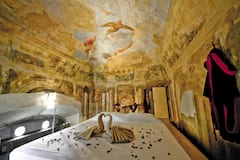
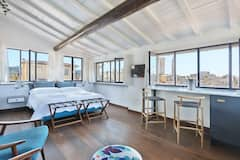
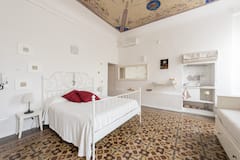
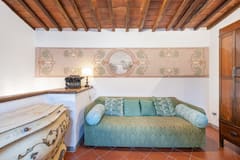




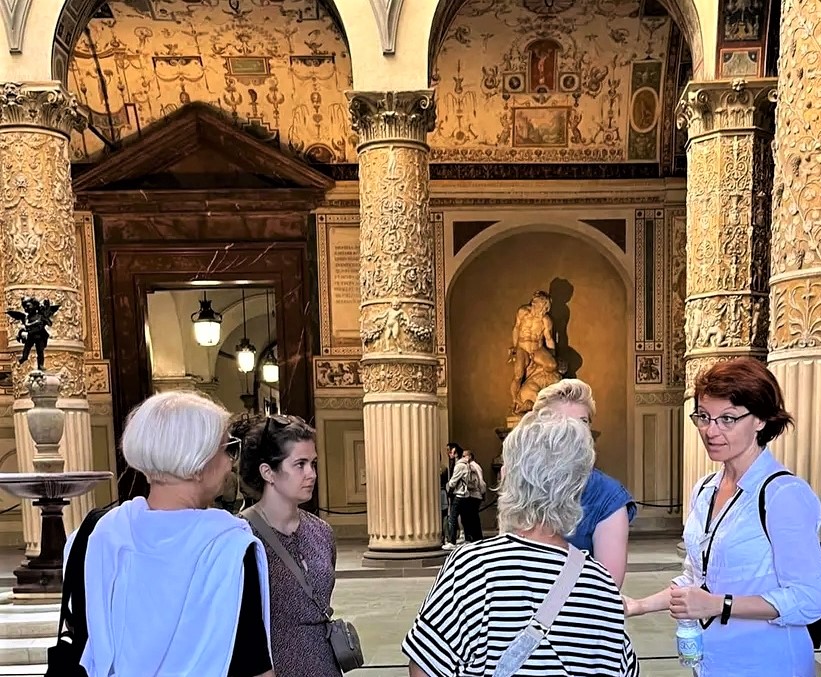
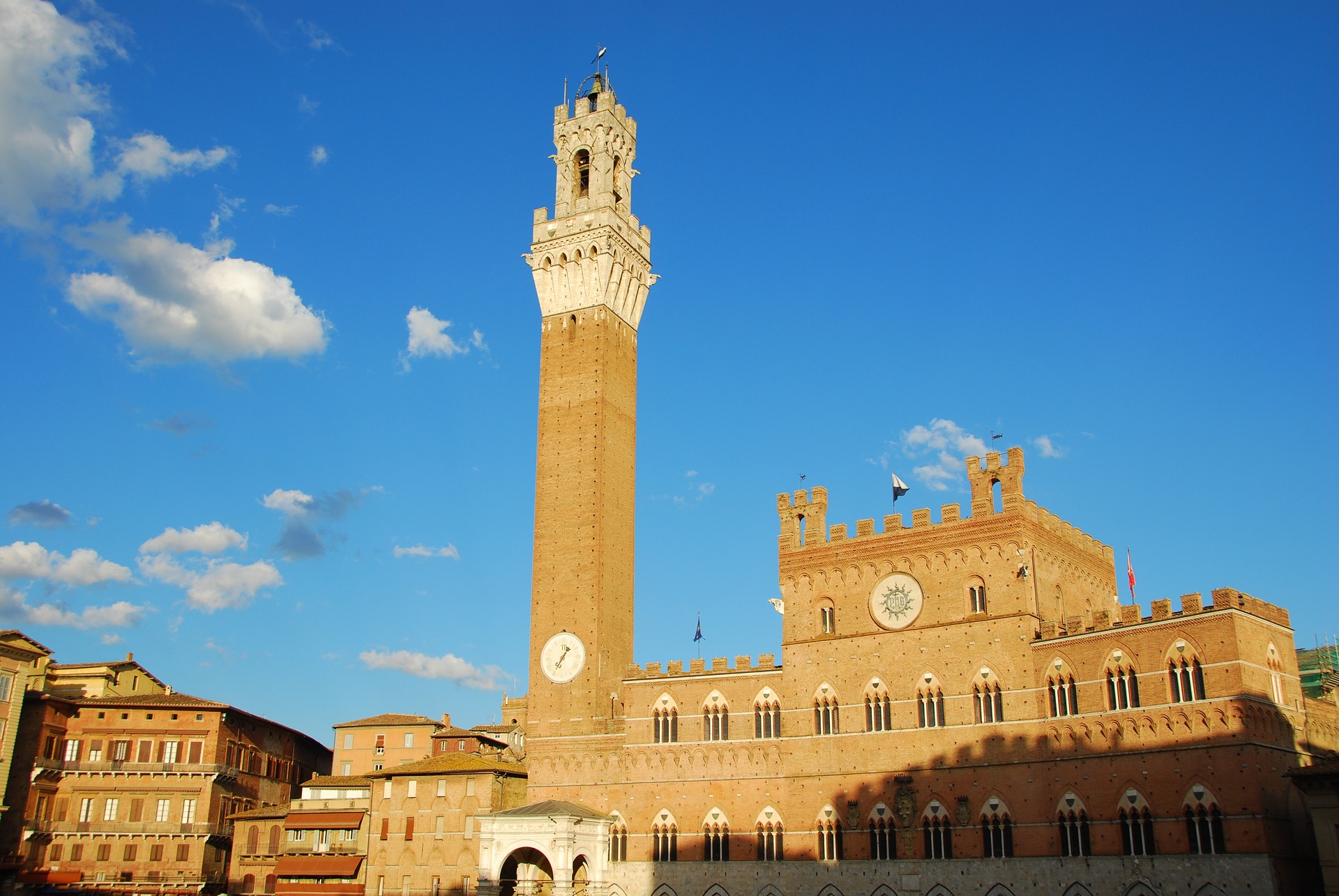
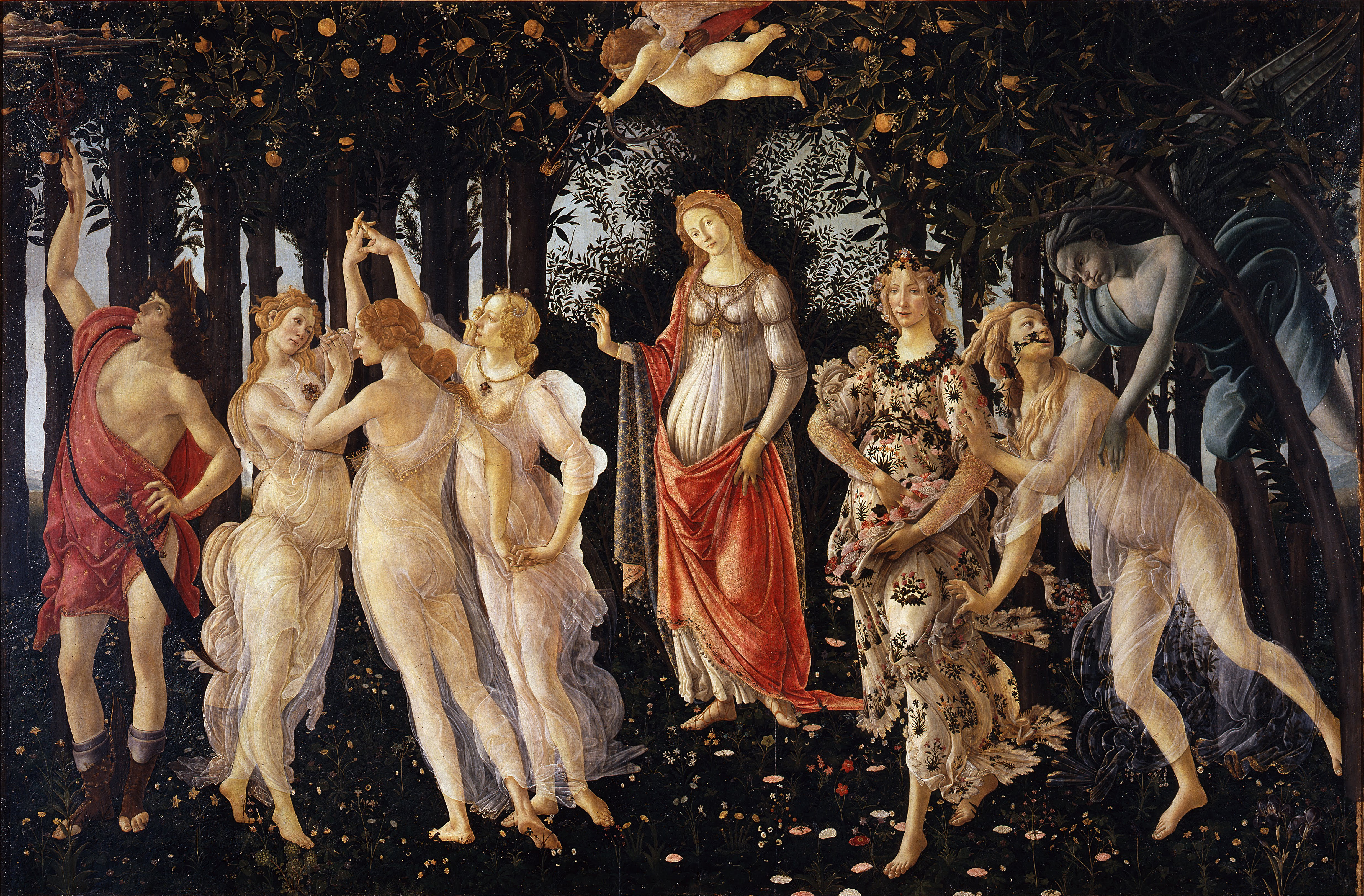
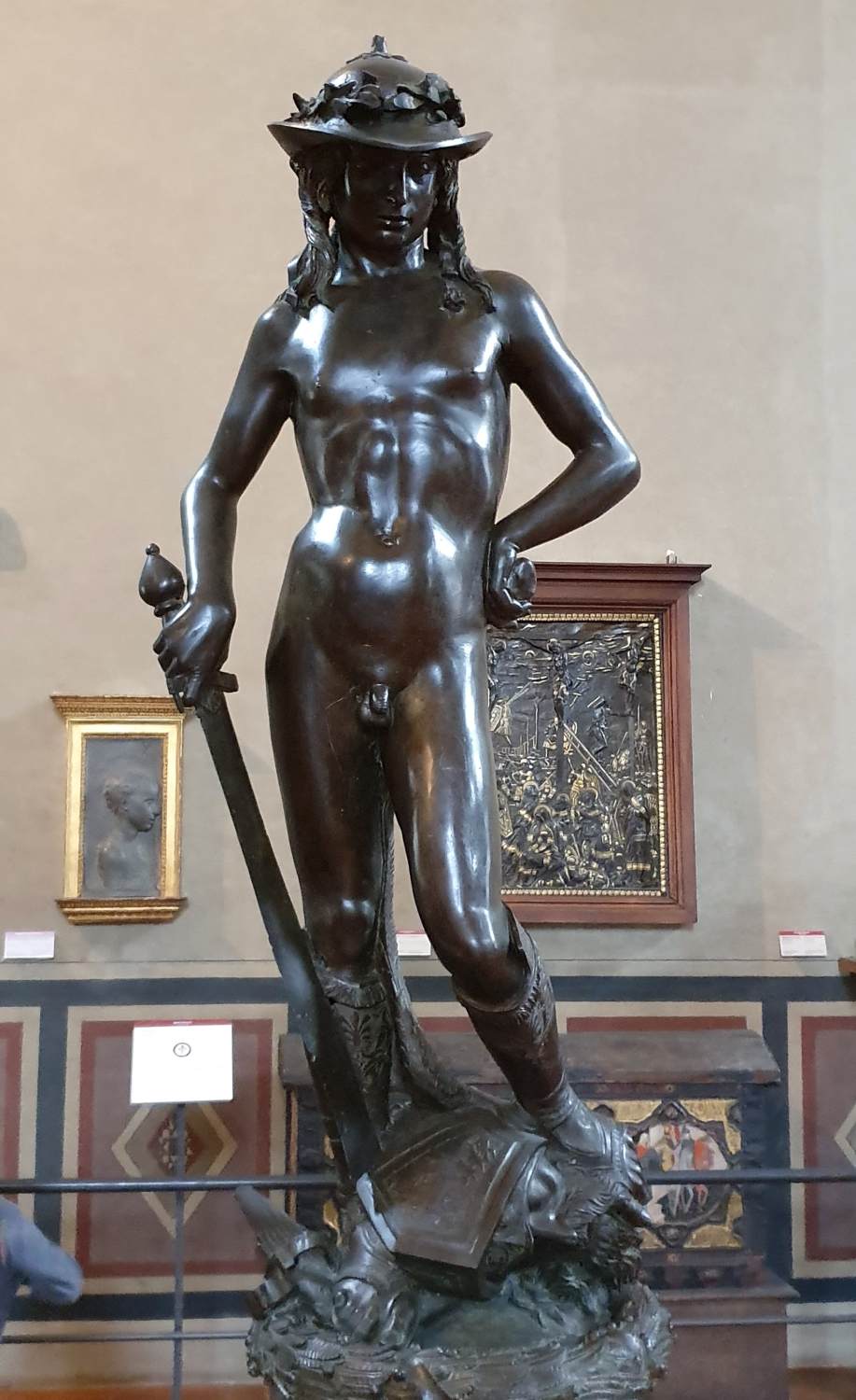
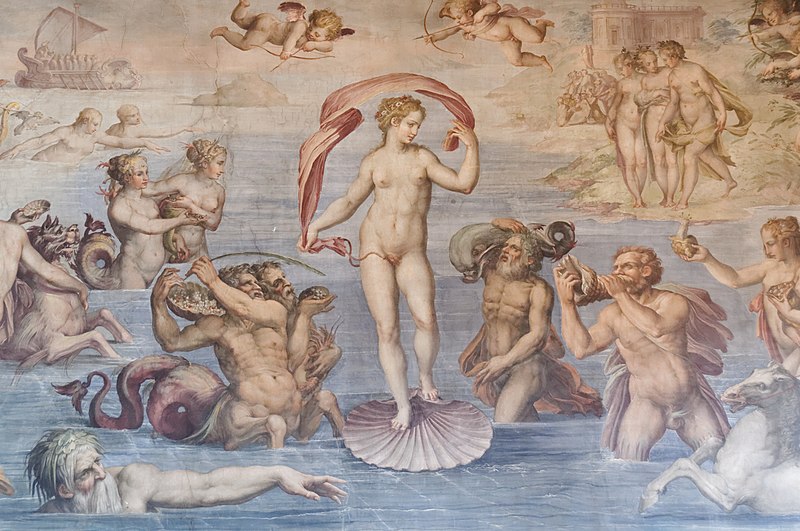
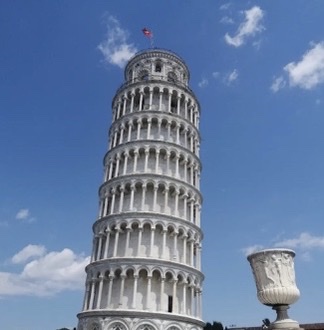
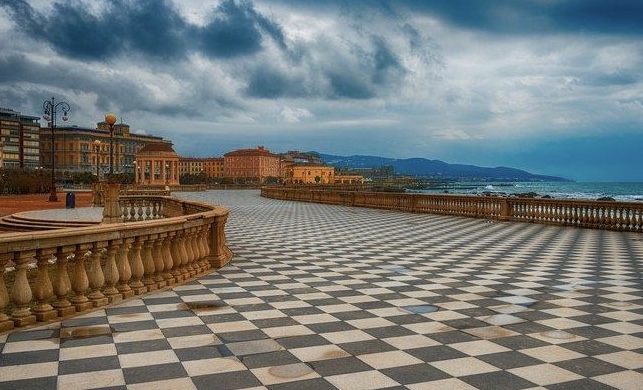
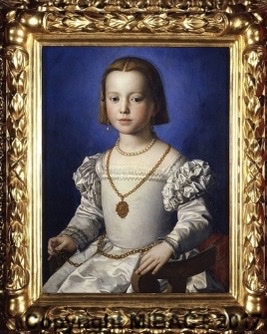










































Create an account to